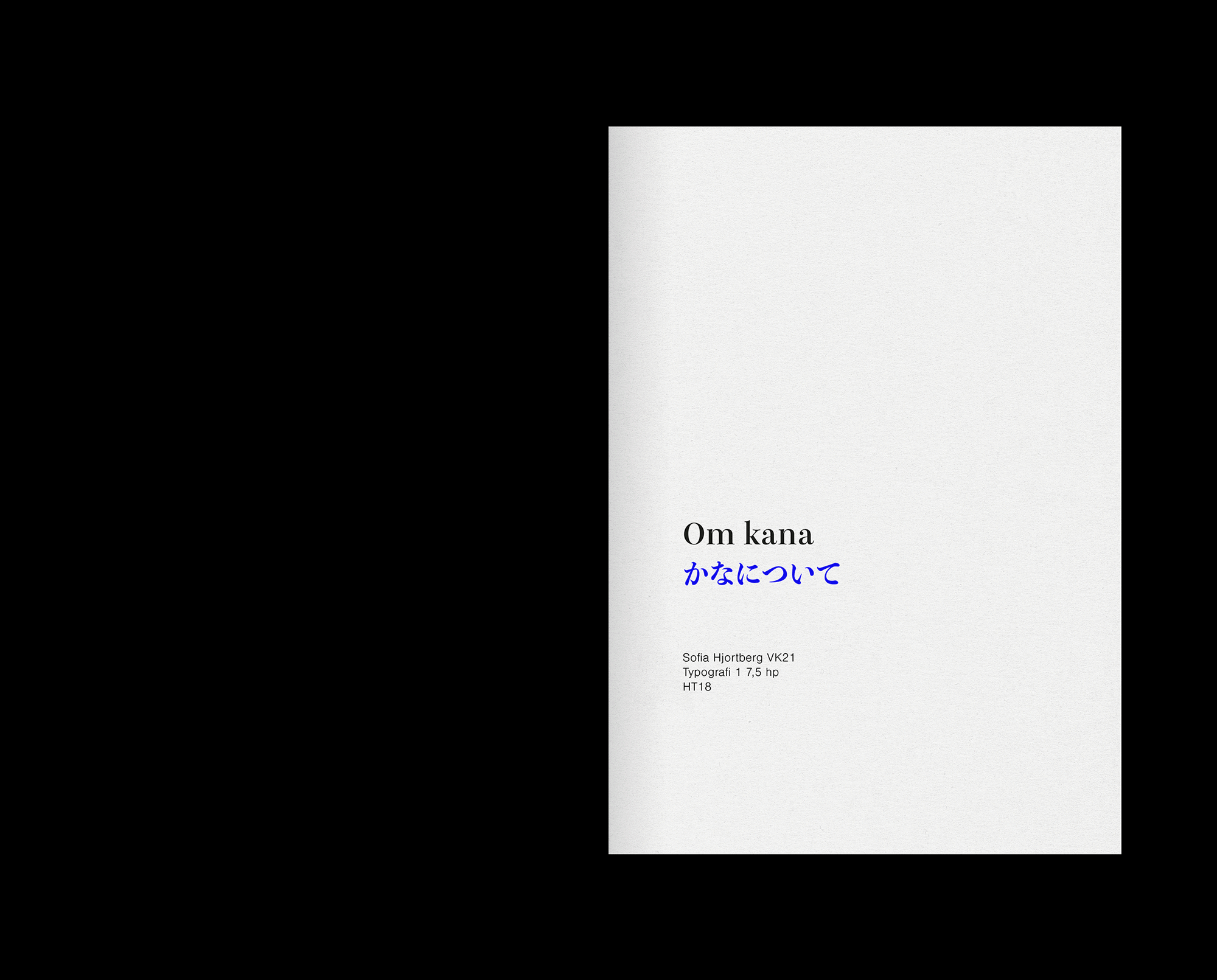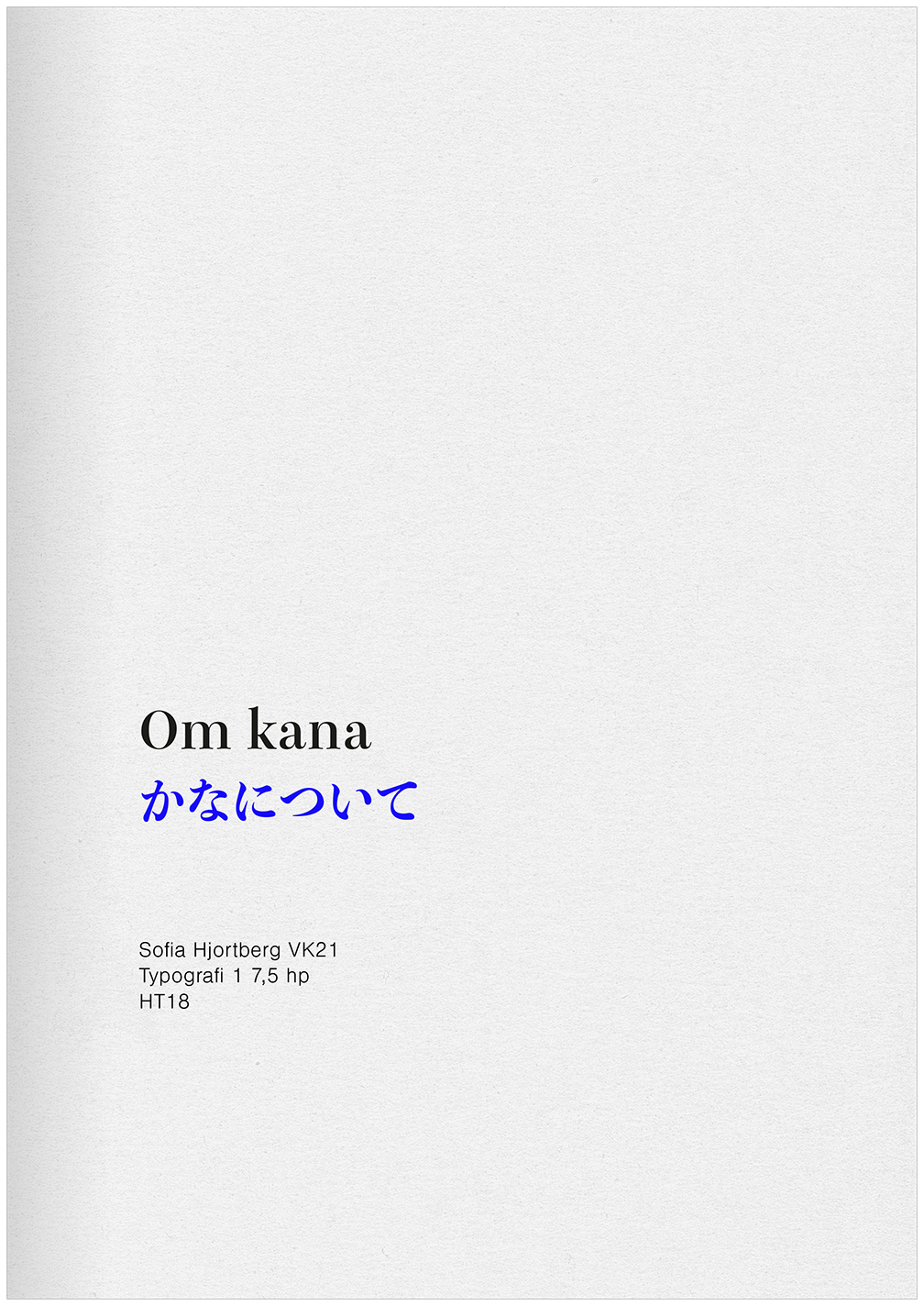Om Kana, 凸版文久见出し明朝 | 2018, typography, design

Riso printed chapter (Om Kana, かなについて, About Kana) in typographic essay collection at Beckmans College of Design, 2018.
About the origin and history of Japanese characters with a correlating poster using a modern font.
Riso printed chapter




Hiragana is used to write around half of the written Japanese language. It’s said that the creators of these syllabograms were poetry and letter-writing women in 4th century, a time where only Chinese characters were used to write in Japanese – characters which were hard to adjust, the grammar of
the two languages being so different. The originators of hiragana felt a need for a phonetic character system which would make it easier to express emotion and nuance. Hiragana did not only demo-
cratize the written language by making it easier to understand the message, but also conveyed
feeling through the shape of the characters themselves. The first calligraphy written in hiragana are still considered to be amongst the most beautiful in Japan. The words trickled from the brush onto
the paper, their shapes affecting the reader to the extent that they’d fall in love with the sender without ever even met them.
In the beginning however, not everyone was convinced. The characters were called ”women letters” and men were advised to stick to the more advanced Chinese character system. But the possibility to express oneself artistically, poetically, personally, was way to tempting and eventually hiragana became the standardized writing system in Japan.
the two languages being so different. The originators of hiragana felt a need for a phonetic character system which would make it easier to express emotion and nuance. Hiragana did not only demo-
cratize the written language by making it easier to understand the message, but also conveyed
feeling through the shape of the characters themselves. The first calligraphy written in hiragana are still considered to be amongst the most beautiful in Japan. The words trickled from the brush onto
the paper, their shapes affecting the reader to the extent that they’d fall in love with the sender without ever even met them.
In the beginning however, not everyone was convinced. The characters were called ”women letters” and men were advised to stick to the more advanced Chinese character system. But the possibility to express oneself artistically, poetically, personally, was way to tempting and eventually hiragana became the standardized writing system in Japan.
Poster

いままでとはちがうぜ
It’s different from before
The font 凸版文久見出し明朝, Toppan bunkyū midashi minchō from Morisawa Co. is a new digital font which has taken the original, traditional stroke of the brush into consideration. The phrase written in typical “masculine” slang is contrasted with the soft letters formerly considered feminine.
It’s different from before
The font 凸版文久見出し明朝, Toppan bunkyū midashi minchō from Morisawa Co. is a new digital font which has taken the original, traditional stroke of the brush into consideration. The phrase written in typical “masculine” slang is contrasted with the soft letters formerly considered feminine.
During a typography exhibition at Beckmans in october 2018, the book and poster were shown alongside the music video to Different Man by AKLO and JAY’ED (made into a karaoke version so that the text would stand out) – the above phrase is a part of the chorus.




